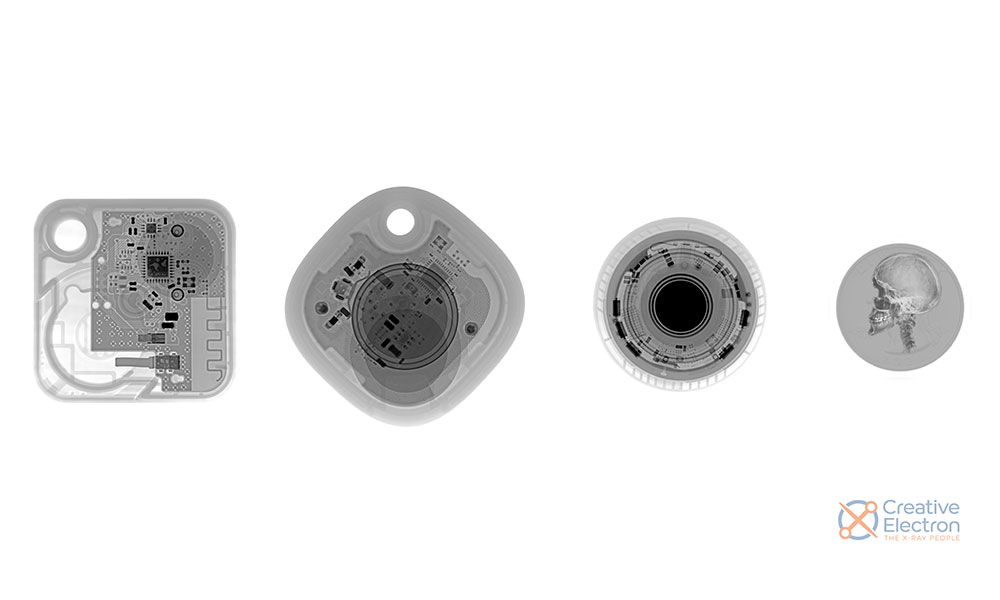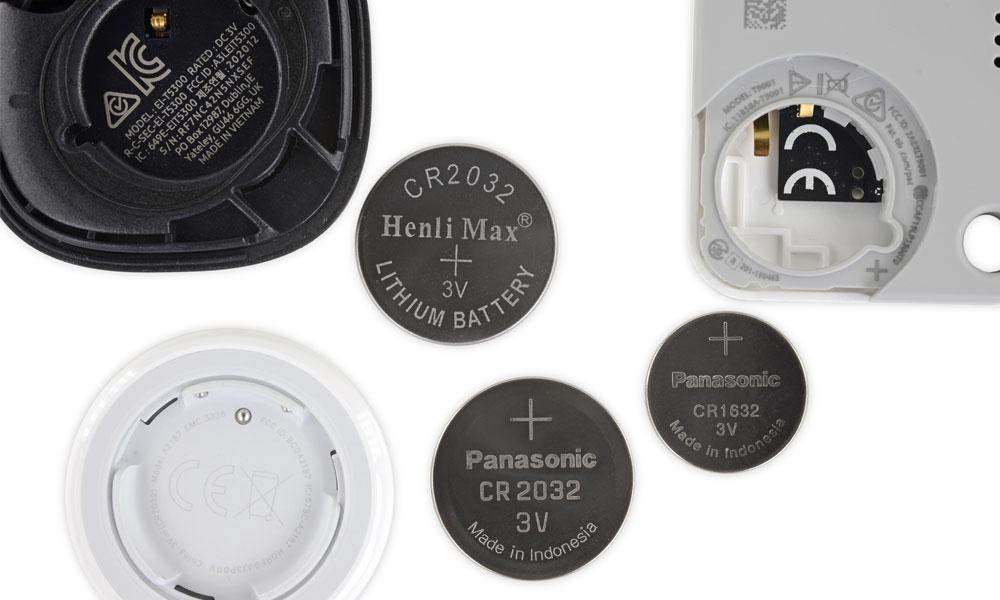How Apple’s AirTag Compares to the Tile Mate and Samsung Smart Tag (on the Inside)
 Credit: iFixit
Credit: iFixit
Toggle Dark Mode
Not surprisingly, curious folks are already starting to pull apart Apple’s new AirTags to see what makes them tick, with some surprising discoveries about much technology Apple has been able to pack into such a small space.
Well-known teardown site iFixit has gone beyond just looking at the innards of AirTag by itself, offering a comparison of Apple’s newest tracking tag alongside the other leading brands — Tile’s Mate and Samsung’s Galaxy Smart Tag.
In the first instalment of what’s expected to be a two-part teardown, iFixit took a peek inside all three tags with the usual assistance from Creative Electron, revealing that Apple wasted no space at all inside its diminutive little tags.
In fact, iFixit suggests that they’re “about the smallest they can get, judging by the density.”
Of the three, the AirTag’s Mentos-esque puck is the tiniest. About the size of a half-dollar coin, it’s not much larger than the battery that powers it.
iFixit
A comparison of the x-ray images makes the “other trackers seem sprawling by comparison,” as iFixit notes, and they include fewer components than Apple’s. For instance, the AirTag not only includes ultra-wideband (UWB) technology for its “Precision Finding” feature, but also has a relatively sizeable central speaker magnet.
Samsung officially launched a UWB version of its tracker a couple of weeks ago, but so far, it seems that it’s impossible for anybody to get their hands on it, including iFixit, which notes that they tried, but failed to do so. Tile is also reportedly working on its own UWB tracking tag, but that one hasn’t even been released yet.
Cracking Them Open
Moving beyond the x-rays, iFixit cracked open all three tags, noting that they can all be opened “with finger power,” so no special tools are required, which makes sense since of course they all have replaceable batteries.
Even so, the AirTag was perhaps unsurprisingly the most difficult of the bunch, akin to “opening a stubborn pickle jar with just two slippery thumbs,” since it doesn’t include the divots the other ones have that allow for easy separation with only a fingernail.
Despite some early rumours that Apple was considering using rechargeable batteries, or possibly even disposable tags, the company instead went with a standard replaceable battery, effectively matching the competition. iFixit commended Apple for this one, particularly since it took Tile six years — and 15 million tags left in landfills — before it got with the program and redesigned them with a replaceable battery.
Notably, however, Tile uses the smaller and slightly less common CR1632 battery, while both AirTags and Samsung’s SmartTags use the ubiquitous 3-volt CR2032 coin cells. While the CR2032 is a larger battery, and therefore takes up more space, it also provides more juice. Combined with its ridiculously widespread availability may have been a bit factor in Apple going with the larger size.
However, it’s also clear from the teardown that it had the space anyway. All the technology crammed into the AirTag left it slightly larger than the footprint of a CR2032 battery, and since most coin cells have a fairly uniform thickness, there wouldn’t have been any real advantage in going with a smaller one.
While early patent filings did show indications that Apple was at least considering designing AirTags to work with a wireless charger, it’s fair to say that this probably wouldn’t have been nearly as cost-effective. Based on the timing of these rumours, it’s also quite possible the idea simply died on the same table as Apple’s ill-fated AirPower wireless charging pad.
Digging Deeper
While opening up the AirTag to the point of getting at the battery is somewhat trivial, getting into the guts of the tag itself required a bit more effort, although iFixit was somewhat pleasantly surprised that the AirTag wasn’t as insanely glued-down as some of Apple’s other products.
Still, the Tile and SmartTag required nothing more than “a spudger and a splash of heat,” while the AirTag required overcoming some glue and three clips that had to be handled gingerly to avoid breakage.
Once inside, what looks like a button at first glance actually turns out to be the core of the AirTag’s speaker — a magnet surrounded by a coil of copper that effectively uses the AirTag’s body as the speaker driver.
It’s a surprisingly good speaker for something like this, and it’s clear that Apple didn’t want to cut corners on sound quality, even in an AirTag. Rather than going for the smaller lighter piezoelectric speakers used by the competition, Apple opted for a bulky and weighty magnet to make sure that AirTags users have a more pleasant auditory experience when locating their lost items.
Looks like one corner Apple refused to cut on this tiny disk is sound quality. Piezo speakers are tiny and cheap, and sound like it—we’re talking McDonald’s happy meal speakers here. Knowing Apple, and knowing how seriously they take their noisemakers, sound quality can never be compromised, not even here.
iFixit
To be clear, iFixit notes that the AirTag doesn’t provide higher volume levels, so the better speaker isn’t about that, and while the noise emitted by the AirTag does sound a bit more pleasant, it does leave us wondering what else Apple may have up its sleeve for this more advanced speaker design.
A Hole in One
We’ve already heard reports of people drilling holes in their AirTags to mount them, and while it’s still not something we recommend, the folks as iFixit did decide to try it more professionally and scientifically, noting that it’s possible if you’re very, very careful.
One last warning before we share our drilling secrets: attempt this at your own risk! Drilling in the wrong place can cause serious damage, so don’t try this at home unless you’re willing to potentially turn your tracker into a very light paperweight
iFixit
Notably, even though the plastic casing of the AirTag is used as the speaker diaphragm, drilling a hole didn’t change the sound profile much, and the AirTag continued to function normally. Again, however, this requires a small drill bit, a lot of precision, and a willingness to sacrifice your $29 AirTag in the event that something goes wrong — either during the procedure or even later on, since chances are pretty good it will void any warranty on the AirTag as well.
iFixit isn’t through yet, and this is really just a preliminary look. In the second part, it’s promising to uncover even more secrets, including detailed shorts of the boards, a rundown of the chips used not only by AirTags but by the competition, and more.








